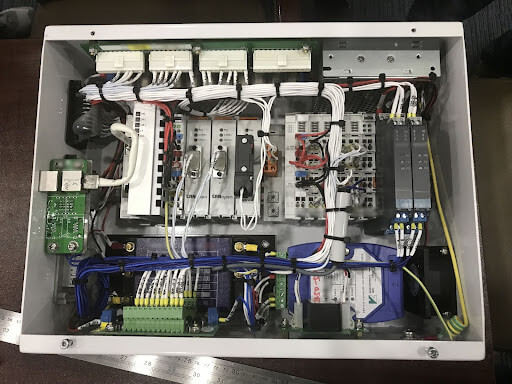In today’s competitive electronics market, cost efficiency is a top priority for manufacturers. Whether you’re producing compact consumer gadgets or large-scale industrial control systems, finding ways to optimize costs without compromising on quality is essential. Two areas where cost control plays a crucial role are PCB assembly and box build assembly. These stages of electronic manufacturing involve numerous components, processes, and logistical factors—each with opportunities for smart savings.
In this article, we’ll explore actionable cost optimization strategies in PCB assembly and box build projects, focusing on materials, processes, design, and vendor management.
1. Start With Design for Manufacturability (DFM)
One of the most effective cost-saving strategies starts before the first circuit board is produced—during the design phase. Design for Manufacturability (DFM) ensures that the product is not only functional but also easy and cost-efficient to manufacture.
How DFM Helps:
-
Reduces complex board layouts that may require extra layers or specialized manufacturing techniques.
-
Ensures component placement and orientation are optimized for automated assembly.
-
Identifies components that are obsolete, rare, or unusually expensive.
-
Minimizes rework, scrap, and delays due to design-related errors.
Tip: Work with your PCB assembly partner early in the design phase for DFM input—they can suggest changes that significantly reduce costs.
2. Use Standard Components Wherever Possible
Custom or rare components often come with a high price tag and long lead times. Using standard, off-the-shelf components can reduce procurement costs and speed up production.
How to Implement:
-
Avoid components that are end-of-life (EOL) or single-source.
-
Stick to widely available packages (e.g., 0603, 0805 SMD sizes).
-
Choose components that are already used in your other designs to benefit from volume pricing.
Tip: Ask your EMS provider if they can suggest functionally equivalent components that are less expensive or easier to source.
3. Optimize PCB Layout and Size
The PCB itself is a major cost driver in any electronics project. PCB size, layer count, and materials all influence cost.
Strategies to Reduce PCB Cost:
-
Reduce board size without sacrificing functionality.
-
Use double-layer PCBs instead of four- or six-layer when feasible.
-
Avoid unnecessarily tight tolerances, which increase manufacturing difficulty.
-
Combine multiple PCBs into a panelized array to improve throughput during assembly.
Tip: Consider rigid-flex or high-density interconnect (HDI) designs only if absolutely necessary—they’re powerful but expensive.
4. Consolidate Vendors and Services
Managing multiple vendors for PCB assembly services fabrication, component sourcing, and box build assembly can create inefficiencies and increase overall project costs. Partnering with a single-source EMS provider for all services can lead to major savings.
Benefits of Consolidation:
-
Reduced logistics and shipping costs.
-
Streamlined communication and fewer errors.
-
Improved inventory management.
-
Volume discounts from combined service orders.
Tip: Choose a manufacturing partner that offers end-to-end services including PCB assembly, box build, testing, and shipping.
5. Bulk Purchasing and Strategic Sourcing
Component prices are significantly affected by purchase volume and supplier relationships. By planning ahead and ordering in bulk, you can take advantage of better pricing and avoid costly shortages.
Tactics for Effective Sourcing:
-
Work with a manufacturer that has strong supplier networks.
-
Use volume forecasting to predict future demand and lock in pricing.
-
Consider alternate sources to avoid markups from limited suppliers.
Tip: Some EMS companies offer consignment or partial turnkey options—ask if supplying your own parts would reduce costs.
6. Automate Where Possible
Manual assembly, particularly in the box build phase, is time-intensive and expensive. While some tasks must remain manual (e.g., custom cable routing or hand-soldering unique connectors), automation can dramatically lower labor costs.
Automation Opportunities:
-
Surface Mount Technology (SMT) for PCB population.
-
Automated Optical Inspection (AOI) to replace manual visual inspection.
-
Automated wiring and cable harness equipment in box build stages.
Tip: Design products with automation in mind—avoid layouts or enclosure designs that require excessive manual labor.
7. Streamline Testing Procedures
Testing is essential, but over-testing can consume time and budget. Focus your testing efforts on the most impactful checks.
Cost-Effective Testing Strategies:
-
Use In-Circuit Testing (ICT) to catch defects early in the PCB assembly stage.
-
Implement Functional Testing (FCT) at the final box build stage.
-
Create modular testing systems that can be reused for similar product lines.
Tip: Work with your partner to develop a testing protocol that balances risk, reliability, and cost.
8. Improve Logistics and Packaging Efficiency
Shipping and packaging may not seem like big-ticket items, but inefficient processes can lead to rising costs—especially in box build assembly where finished products are bulky or fragile.
Smart Logistics Tactics:
-
Design enclosures and packaging that stack and ship easily.
-
Use protective yet minimal materials to reduce weight and shipping volume.
-
Consider drop shipping to reduce warehouse handling.
Tip: Evaluate your packaging design alongside your product design to identify cost-saving opportunities.
9. Minimize Rework and Returns
Defective products not only cost money to fix—they also harm your brand. Prevention is more affordable than correction.
How to Reduce Rework:
-
Enforce strong QC at every stage of assembly.
-
Use real-time monitoring and traceability to catch issues early.
-
Encourage clear documentation and training for assembly procedures.
Tip: Track the causes of defects and implement a continuous improvement program to drive down return and rework rates.
10. Review and Adjust Regularly
Cost optimization isn’t a one-time event—it’s an ongoing process. Regularly reviewing your processes, supplier performance, and design choices will help you stay lean.
How to Stay Ahead:
-
Analyze spend reports and production KPIs regularly.
-
Solicit feedback from your manufacturing partner.
-
Benchmark against competitors or industry averages.
Tip: Set a quarterly cost review meeting with your assembly partner to identify new opportunities for improvement.
Conclusion
Cost optimization in PCB assembly and box build projects doesn’t mean cutting corners—it means making smarter decisions at every step of the process. From design and sourcing to assembly and testing, each phase presents opportunities to improve efficiency, reduce waste, and boost your bottom line.
Partnering with the right EMS provider, embracing design for manufacturability, and continuously reviewing your strategy are the keys to long-term cost control and product success.
By implementing even a few of these strategies, you’ll be well on your way to delivering high-quality products at lower cost—and that’s a win for your business and your customers.




